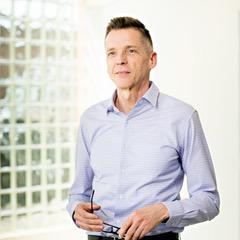In TNTP’s 2018 report The Opportunity Myth, the consequences of low expectations endemic in America’s classrooms are laid bare.
Students’ lives, the authors wrote, “were slipping further away each day, unbeknownst to them and their families—not because they couldn’t learn what they needed to reach them, but because they were rarely given a real chance to try. . . . Students spent more than 500 hours per school year on assignments that weren’t appropriate for their grade and with instruction that didn’t ask enough of them—the equivalent of six months of wasted class time in each core subject.”
That’s got to change. But here’s the rub.
As I argued in my last blog post, exhorting teachers to raise their expectations doesn’t work. The tasks asked of children remain unchallenging. Too often students are relieved of the thinking work, their capabilities underestimated, their ideas unheard.
Now imagine you’re a teacher. What if every day you had the opportunity to watch an expert educator pull off rigorous lessons pitched sky-high? A teacher you knew and respected, delivering the very same content you’re about to tackle with your own class? How might your practice develop?
That’s the premise of Cadence Learning. In each grade, mentor teachers craft lessons, model their teaching, and lead virtual professional development sessions rooted in the week’s content.
For five weeks this summer, more than a thousand teachers around the country are delivering Cadence lessons, in both in-person and virtual settings. They are equipped not only with their lesson plans, slides, and student-facing materials, but with a complete video of their mentor teaching the same lesson to real kids doing the real learning.
The mentors approach their work with humility; they make no claim to perfection. “It’s like we’re going kayaking down the river together,” Jeff Li, a celebrated teacher from KIPP and a Cadence mentor explained of his work with the teachers he led across the country. “And I’m in front of the group. I’m getting kicked around. I hit a rock here, an eddy there. And I can tell you when they’re coming.” Teachers arrive to their class uniquely prepared.
Even though many or most students enrolled in the summer program are academically behind, every lesson is insistently pitched at or above grade level. Content foregrounds and celebrates authors and thinkers of color and elevates their voices and perspectives. Instruction is discourse-based, not didactic; the aim is for students to do the thinking work, learn from one another, and take intellectual risk.
Twice a week, teachers meet by Zoom with their mentors and their same-grade peers in a live video conference—in effect, a national grade-level team meeting. In that hour, they both deeply prepare for the next lessons and mine the work their students produced and the implications for their teaching.
Is it working? Here is what we know so far. Eighty-seven percent of families this summer said they were likely or extremely likely to recommend other students attend a summer school that uses Cadence’s programming—with more than two-thirds selecting the highest possible response. Students reported feeling supported. Eighty percent strongly agreed with the statement, “My teachers give me good feedback that helps me improve my work.”
Ninety-two percent of participating districts and school leaders say they would recommend Cadence to other schools. “I tell teachers that this is the ideal teaching environment for anyone looking to grow as a teacher,” one administrator wrote.
“Creating a space where students’ thought processes are celebrated is key in improving math literacy,” one participating math teacher told Cadence. “I think it’s extremely beneficial to have a complete block that focuses on conceptual understanding of a word problem,” another said. The discourse is so important for a growing mind.”
Literature teachers described how the program equipped and inspired them for success. “I was glad that the text was both culturally responsive and engaging for students. It pushed their thinking on their own identity and their understanding of the world,” one wrote. “The back-pocket questions and scaffolding are really helpful,” wrote another. “It helps me get my students to the best possible understanding of the material while still trying to get them to do a majority of the heavy lifting.”
There is evidence that the program is fostering an interest in reading. Eighty-six percent of students agreed or strongly agreed that the program’s novels made them want to read every day. “The book we are reading in this program isn’t boring, it’s very interesting and keeps me wanting to read more!” one seventh-grader wrote. A fifth-grader agreed: “My favorite part of summer school was the novel. I was so excited to see what was going to happen next.”
An independent evaluation of Cadence’s pilot program last summer, prepared by Marty West of Harvard GSE and Beth Schueler of the University of Virginia, found overwhelming support from participating teachers. Among survey respondents, 80 percent agreed that the “daily lesson videos and lesson flow documents provided by the mentor teacher are strong” and 79 percent agreed, “I am learning from my mentor teacher.” A large majority agreed with the statement, “I will be a better teacher in the 2020–21 school year because of teaching at NSSI [Cadence],” including 57 percent who strongly agreed.
On the first day of the program, students were given a 30-minute pre-test in both literature and math, and a post-test as the program ended, both constructed of released state exam items. In the course of five weeks, one wouldn’t expect to see significant, if any, measurable academic growth. Yet in every grade, subject, and academic standard, students made growth—striking for its consistency. In math, students made an average gain of 21 percentage points; in literature, they grew 15 points. Some of the largest gains were on standards that gauged conceptual understanding. For instance, sixth graders made average gains of 34 points in understanding ratios and using ratio reasoning to solve problems.
The model scales. Whether 1,000 or 10,000 teachers each day tap Cadence’s daily materials and videos and attend its live, virtually-delivered professional development, Cadence’s operations and costs are little affected.
But applying the model broadly is challenging. The standalone summer program benefits from conditions that are difficult to replicate during the regular school year. Twice-weekly professional development is rooted in the specific lessons, requiring all participants to follow the same pacing, but school calendars vary greatly across the states. Districts have adopted a variety of systemwide commercial curricula, to which Cadence’s single set of materials cannot perfectly align. Contractual work rules in many districts sharply limit non-teaching time, whether for staff meetings or professional development (in large districts during the pandemic, often to one hour a week), necessitating a highly compressed pre-service training and leading to weak attendance at ongoing professional development. Lastly, many veteran teachers report that they felt inspired and reenergized by their mentor, but others wish for greater differentiation in their development, especially during the program’s pre-service training.
Despite these technical challenges, the virtual mentor model offers a new way to rapidly build teacher capacity and accelerate learning as students return to school this fall. In my next post I’ll explore how we can overcome these constraints.




